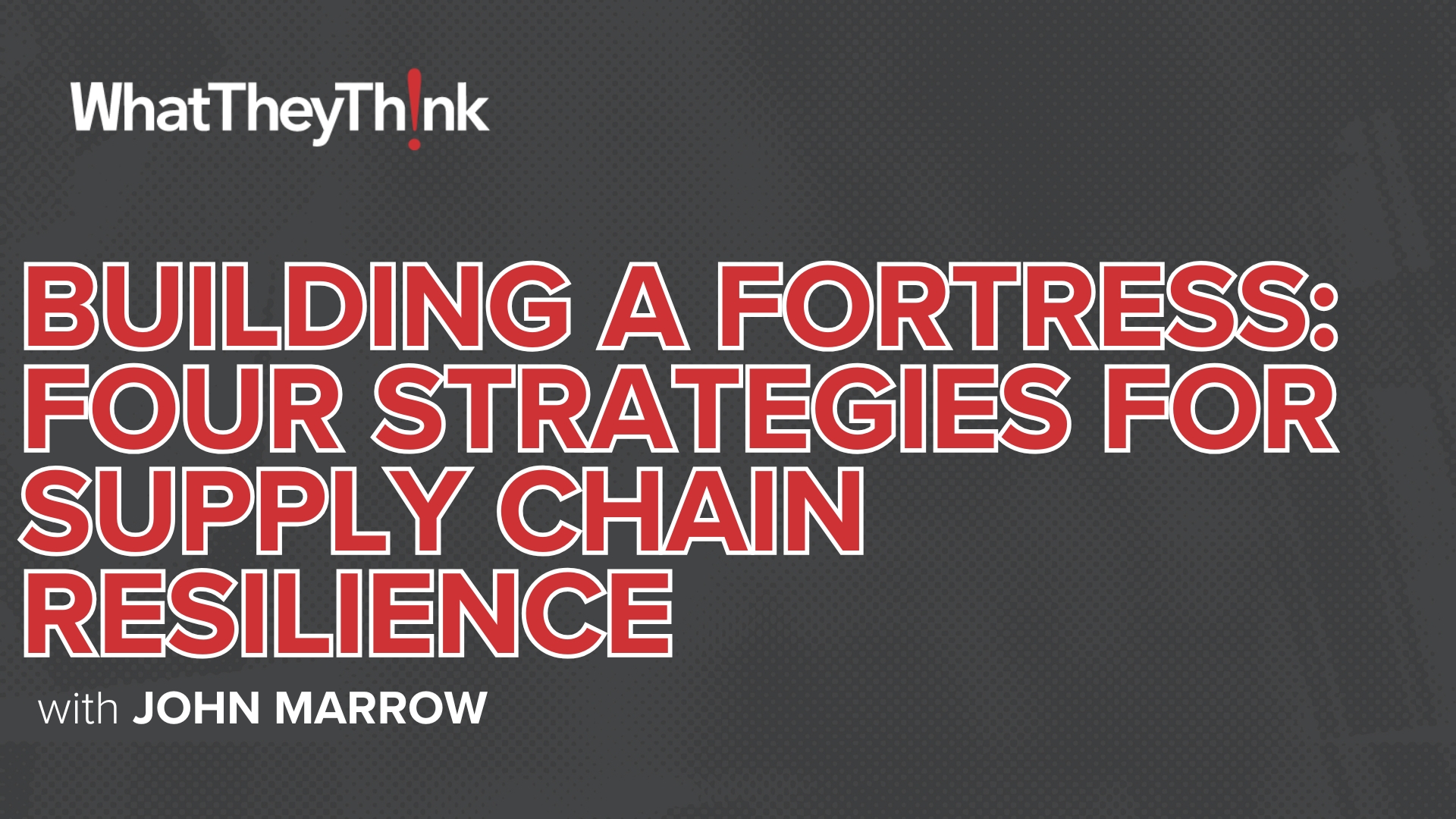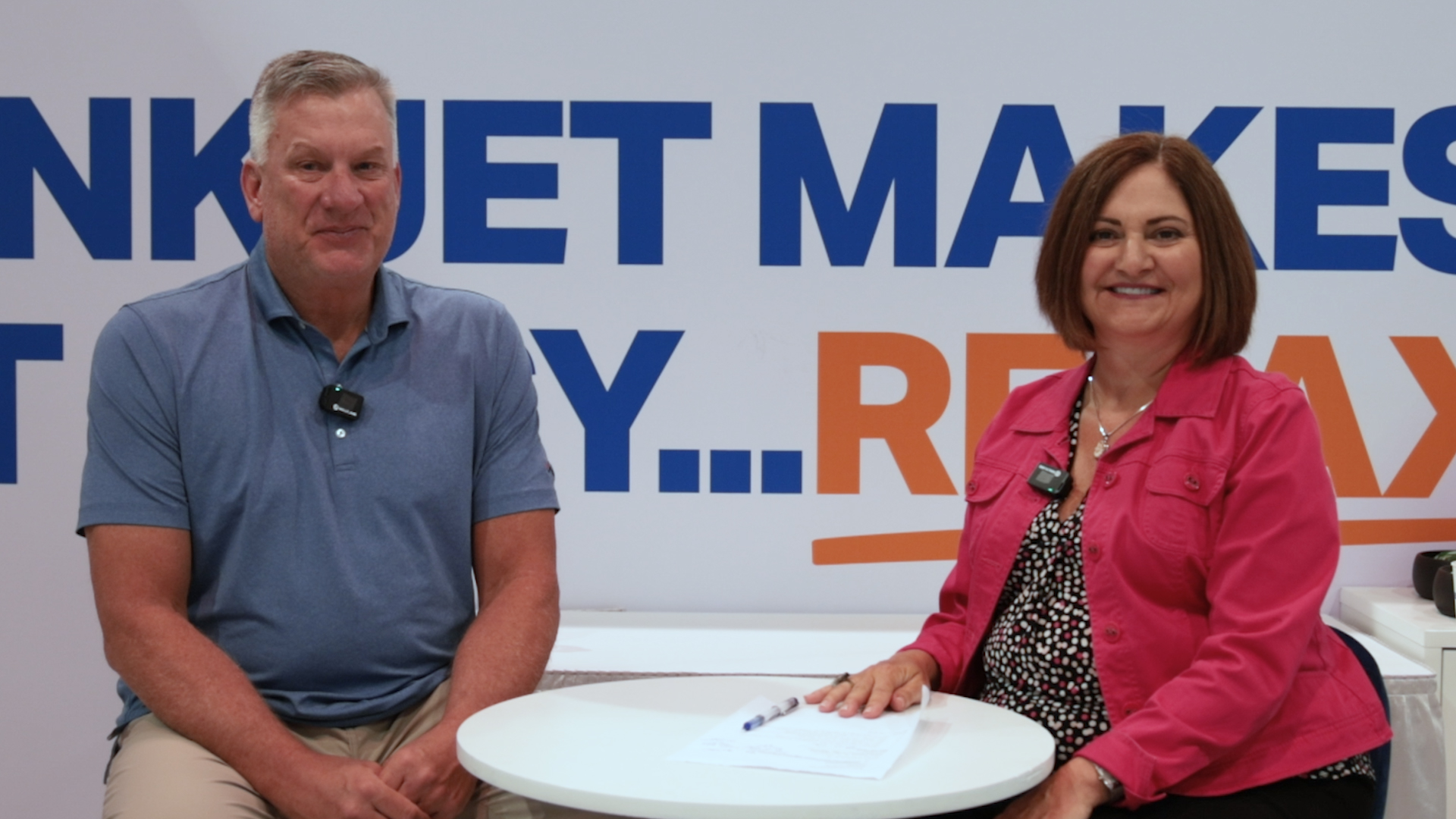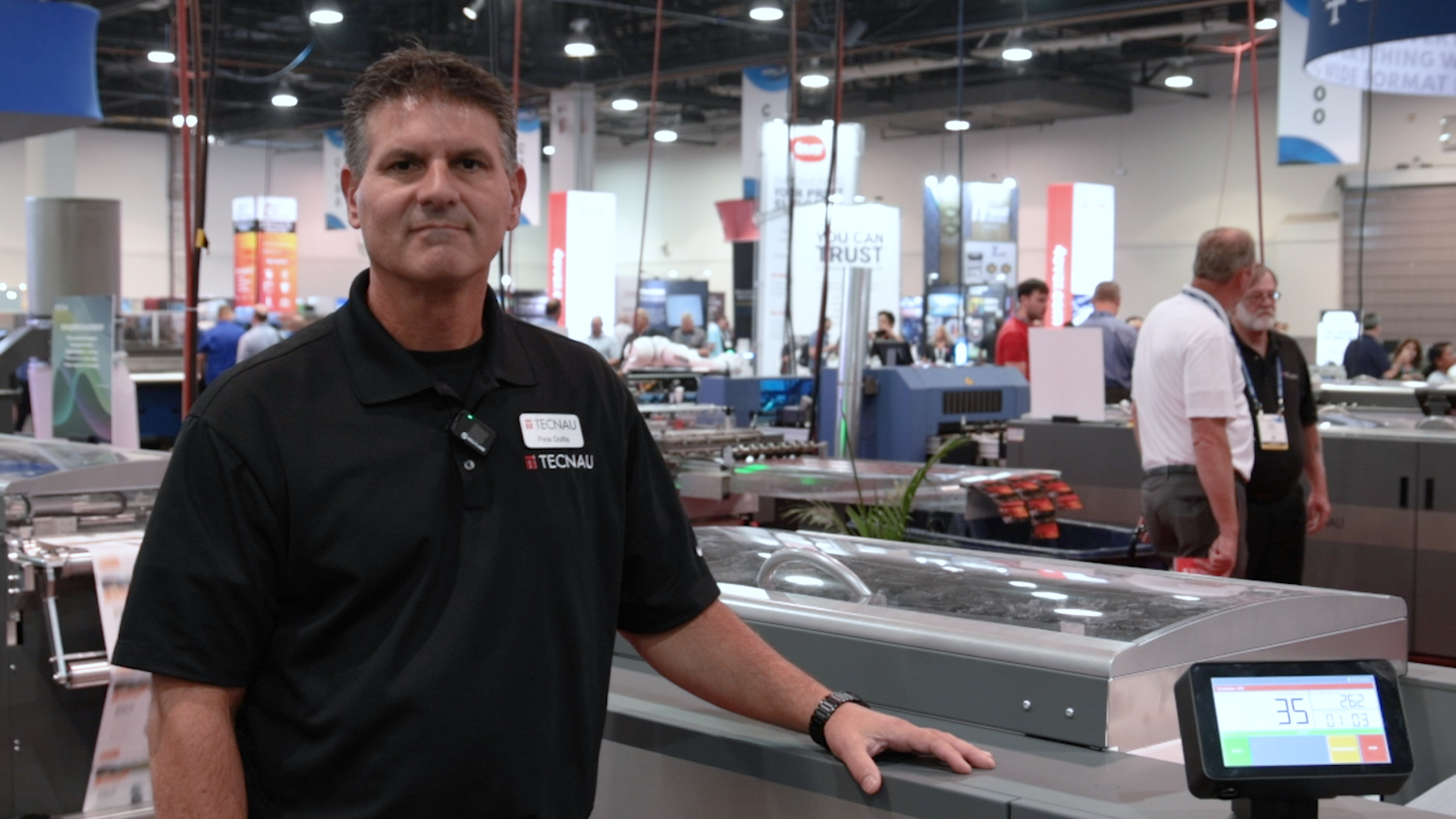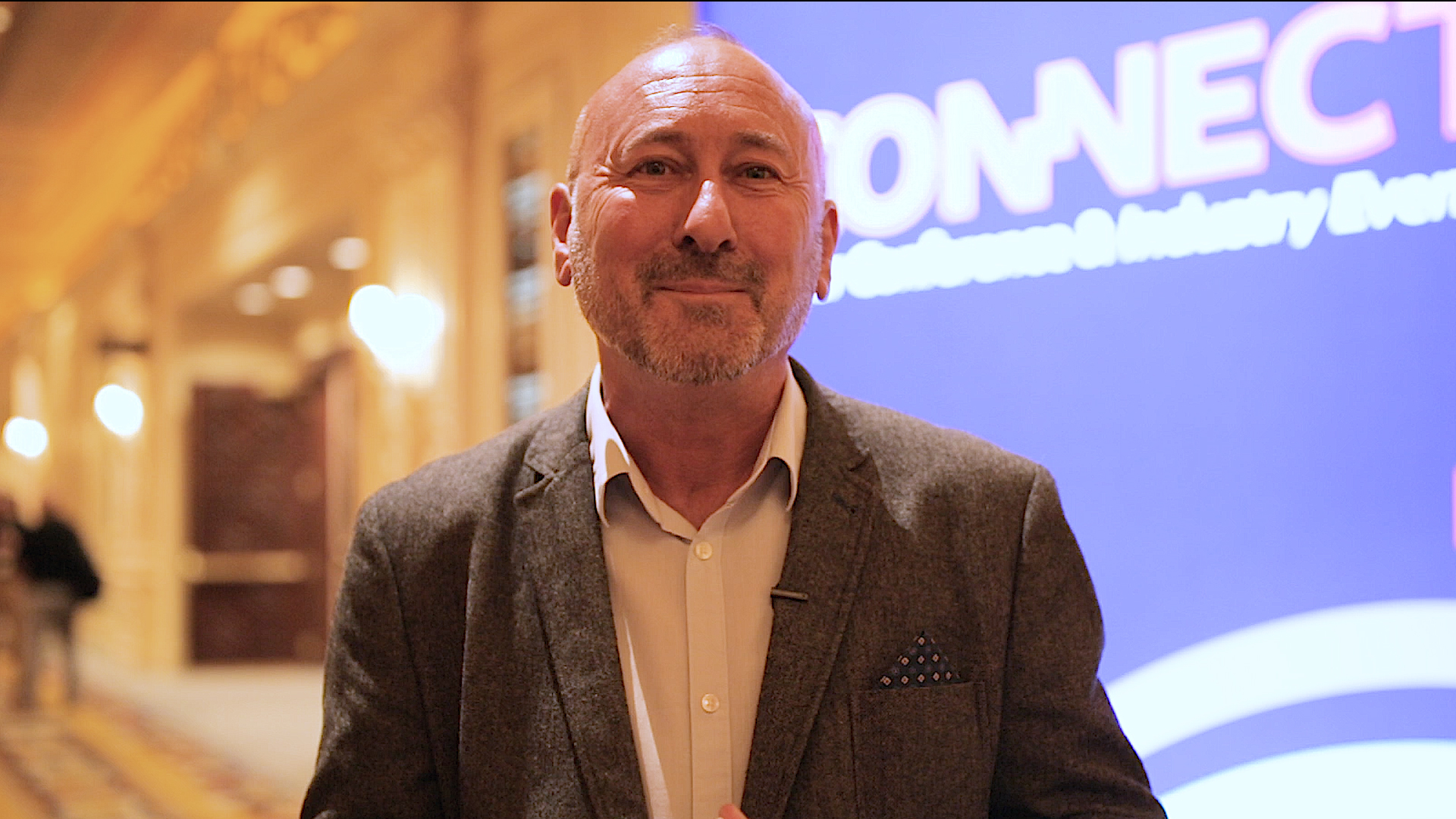Commentary & Analysis
Displaying 601-700 of thousands of articles
Insight You Need. Analysis You Trust.
Get the trusted insights you need to understand our evolving industry and emerging trends. Become a Premium Member.
Remembering Jill Roth
Frank Romano remembers “American Printer” editor Jill Roth, who passed away suddenly last weekend.
You Can’t Automate What You Don’t Know
Think about how you prepare for certification tests or giving a presentation. Most people spend time arranging their thoughts and thinking about their approach. The preparation helps to identify gaps in knowledge and set expectations. Updating or adding automation to production processes in your shop requires that same thoughtfulness. Here is how to get ready before you launch your next automation project.
Turnover and Employment in Print in Europe—Denmark
This bi-weekly series of short articles aims to shed a spotlight on the size of the printing industry in Europe per country and how revenues and employment developed in 2020, when the pandemic impacted businesses. This time we look at Denmark, the 17th largest printing industry by turnover in Europe and the third largest in the Nordic region.
Green Agriculture: Shaping the Future of Farming and Producing “Greener” Natural Fibers
When we write about sustainability in textiles, we are often talking about the manufacturing processes. But for true sustainability, we need to go back a step further to understand where the feed stocks are coming from. Senior editor Cary Sherburne looks at what progress has been made in sustainable agricultural processes.
Around the Web: Canva Curriculum. Refrigerator Rhyme. Dancing Dinner. Bottle Brace. Picaresque Planning. Coat Comfort. Jupiter Jet. Grocery Ghosts. Candy Canard. Cold Calendar.
Monotype and Canva collaborate on typography courses for schools. An online fridge magnet poetry simulator provides hours of entertainment. A “computational food project” turns meals into interactive performance art, terrifyingly. A frying pan manufacturer is sued for claiming its cookware was forged at a temperature exceeding that of the sun. A water bottle has a magnetic cap that turns it into an iPhone holder or tripod. An online adventure makes inventory management fun. A graphene-based heated jacket hits the market. The James Webb Space Telescope finds a high-speed jet stream on Jupiter. The persistent myth of poisoned Halloween candy. Stouffer’s releases an advent calendar filled with frozen food. All that and more in WhatTheyThink’s weekly miscellany.
August Shipments: …And We’re Up Again
August 2023 printing shipments came in at $7.44 billion, up from July’s $7.04 billion.
Nurturing the Next Generation: Green Grads Highlights Innovations for Environmental Success
In this article, textiles expert and WhatTheyThink contributor brings us the latest news on the Green Grads program. Green Grads celebrates emerging talent from across the country (UK) and focuses on environmental balance and sustainability. It champions innovation, new ideas and concepts that encourage and deliver environmental change. It positions younger entrants into the textiles and apparel industry to present even more innovation in apparel design, helping the industry move towards a more sustainable future.
Single-Pass Textile Printing: What Does the Future Hold?
The first single-pass digital inkjet printer that was specifically designed to print textile fabrics came to market back in 2012, setting the stage for a new era of textile printing technologies. About a decade later, though, adoption of single-pass textile printers has been slow. This article cites recent forecast data from Keypoint Intelligence to consider what the future might hold and how single-pass textile devices can be brought to the next level.
Sights for Sore Feet: Display Graphics and Textile & Apparel at PRINTING United
In this article, we round up some of the major press announcements made at last week’s PRINTING United Expo show, as well as some of the other wide-format technologies on display.
It’s Energy Awareness Month! Simple Steps You Can Take Toward a More Sustainable Future
October is Energy Awareness Month. Heidi Tolliver-Walker suggests some little changes we can make to reduce our energy consumption that can make a huge difference over time.
PRINTING United Does Not Disappoint!
PRINTING United Expo 2023 was a great event. Its convergence model provided an opportunity to see and consider new product expansion and convergence opportunities. There were lots of product introductions and reintroductions, even with drupa looming in the background.
Where Do We Find the Next Generation Print People?
When it comes time to find new talent for your business, where do you go? The local temp staffing agency? Local schools? The national recruiting sites? You may find that pitching a job in print doesn’t bring the responses you would hope. Let’s change that!
Adopting Vendor-Neutral Workflows: No Hassle Job Management and the Cloud
Cloud-based solutions can provide a tremendous benefit for in-plant and print-for-pay printers, especially small to medium-sized operations. In this article, sponsored by Ricoh, Pat McGrew explains how offering automated, vendor-neutral, rules-based workflow technology that provides simple, easy-to-use tools in a SaaS environment removes the requirement of a heavy infrastructure and IT expertise. The key to overall workflow profitability all starts with job onboarding.
Book Printing Establishments—2010–2021
According to the latest, recently released edition of County Business Patterns, in 2021 there were 370 establishments in NAICS 323117 (Commercial Book Printing). This represents a decrease of 31% since 2010—but a decrease of -2.4% from 2020. In macro news, AIA’s Architecture Billings Index (ABI) indicates that demand for design services decelerated in September, boding ill for commercial real estate construction and thus signage projects.
Around the Web: Dead Directories. Packaging Plaudits. Board Biography. Legal Lullabies. Time Travail. Coin Conundrum. Bathroom Boo. Poultry Pro.
An exhibition of imaginary languages. The last vestiges of the phone book are on their way out. Packaging designed specifically to be easy to open. A history of the Ouija board. A site that reads the terms of service for Instagram or TikTok as if they were lullabies. A clock design that is linear—like time itself. Netflix is opening physical locations. Graphene-enhanced condoms. New research finds that the outcome of a coin toss is not exactly 50-50. Japanese ghosts prefer haunting bathrooms. An art exhibition based on James Webb Space Telescope images. grocery chain B&M is looking for a chicken nugget connoisseur. All that and more in WhatTheyThink’s weekly miscellany.
Printed Sewn Apparel On-Demand—An Interview with the Founders of Print Logistic
In many parts of the developed world, re-shoring of the apparel industry is hindered by the lack of sewing talent. But the good news is that talented cut-and-sew shops are popping up all over North America and Europe. In this article, compliments of textiles expert and WhatTheyThink contributor Debbie McKeegan, she interviews the Founders of Print Logistics, a Polish provider of printed sewn apparel on demand.
It’s Fun to Play with the T-C-O-P!
It takes a Village (People). Pat McGrew looks at how understanding the way that different maintenance strategies affect your Total Cost of Operations and your Total Cost of Print involves ensuring you are capturing the correct data in a normalized way.
Smart Leader Insights
Wayne Lynn introduces his new “Smart Leader Insights” series with a preview of the articles to come in the next several months.
How Do You Get Customers Unstuck?
Heidi Tolliver-Walker looks at Full Sail, which offers a full complement of print and digital marketing solutions—including a full production studio—helping customers take advantage of multiple-channel campaigns.
Turnover and Employment in Print in Europe—Romania
This bi-weekly series of short articles aims to shed a spotlight on the size of the printing industry in Europe per country and how revenues and employment developed in 2020, when the pandemic impacted businesses. This time we look at Romania, the fourth-largest printing industry by turnover in Central and Eastern Europe.
Digital Printing with Dry Toner Is Becoming More Productive, Versatile and Sustainable
Guest contributor Dieter Finna of pack.consult looks at the current state of digital printing using dry toner, a technology that has had a decisive influence on the success of digital printing processes for more than two decades.
Artificial Intelligence (AI): An Explainer
It seems like news about artificial intelligence (AI) is everywhere, but most of it seems to assume that readers or listeners have a basic understanding of what AI is…and I’m not sure that’s accurate. That’s why we decided to dig into the topic and provide this basic explainer for our members. Note: This article was partially written by ChatGPT, an AI application.
Around the Web: Finnegan’s Finale. Taboo Tomes. Reading Remedy. Tack Tech. Poultry Performance. Fish Fable. Webb Wonders. Candy Cartography.
A book club finally finishes Finnegans Wake—28 years after it started. A history of book banning. Graphene-infused packaging that reduces plastic consumption. DEC may be gone, but its legacy lingers. A new font aims to make reading easier for dyslexics. An AR-powered football helmet with a screen that allows deaf players to see play calls in ASL. “Who knows what evil lurks in the hearts of men?…The Shadow knows!” Music for chickens. What’s the most popular Halloween candy in your state? All that and more in WhatTheyThink’s weekly miscellany.
Q2 Industry Profits: The Latest From the Two Cities
Quarter-over-quarter profit margin data can be fairly noisy but we’re on a general upward trend since the trough of the pandemic.
Prioritizing the Customer Experience in Direct Marketing
Keypoint Intelligence’s 2023 direct marketing communications primary research highlights the importance of a positive customer experience (CX) when delivering marketing communications. Achieving a great customer experience is not without its challenges, but it is necessary for customer engagement and retention. This article explores the importance of a CX strategy, considers the best channels for engagement, and discusses personalization’s role in improving customer loyalty.
Moving at the Speed of Culture: The Rise of the Digital Supply Chain
The legacy fashion and textile industry is complex and slow-moving. Offshoring, waste, and inefficiency are the rule, not the exception, and progress towards a more effective and sustainable model is still terribly slow as the industry remains pegged among the worst polluters in the world. In this article, compliments of Debbie McKeegan, textiles expert and WhatTheyThink contributor, Kornit’s Chris Govier outlines some of the reasons why the pace of change is so slow and highlights some of the governmental and other actions taking place or anticipated that could accelerate the necessary transformation.
Canon Opens the Curtain on Two New Production Inkjet Printers
Today, Canon announced a sneak peek at two new production inkjet presses: the varioPRINT iX1700 cutsheet, and the LabelStream LS2000 label press. Since Canon has held the number one global position in inkjet presses for over 10 years, this is an important development and can only help ensure that they will retain that position.
Landa: Hitting Its Stride
Here we are, 10+ years after the initial introduction of the Landa Digital Print technology, and roughly four years after initial sales commencement. Today there are over 40 machines installed, six installations coming up in the next three months, and right after that, another dozen and more in the pipeline. Sponsored by Landa, this article by David Zwang looks at the Landa Press technology, how their customer-centric support relationships are fairly unique, and why they are growing.
Can AI-Generated Images Replace Stock?
We’ve heard about AI-generated marketing copy and AI-generated video platforms. How about AI-generated images? Heidi Tolliver-Walker takes a look at the output from three popular options.
E-commerce Opens High-Revenue Opportunities for Inkjet, Smithers Analysis Shows
Digital print e-commerce packaging jobs in North America will be worth $1.26 billion in 2023, according to Smithers’ new study, The Future of Digital Print for E-commerce to 2028. Smithers editor John Nelson looks at the current packaging e-ecommerce market trends and technologies.
Italian Printer PrintSprint Rises to Technological and Economic Challenges
Inkjet Insight’s Elizabeth Gooding profiles Naples, Italy’s PrintSprint, a printing company that has been adapting to changes since its inception 30 years ago, including adopting production inkjet and installing solar panels across the surface of their building.
Who Are You Hiring?
Every print shop is in the hunt for new team members. They are harder to come by these days as schools pivoted to teaching more courses focused on online delivery and fewer covering color management, prepress skills, and print operations. It begs the question, where should you be looking? Who should you partner with to find a flow of talent? Here are some ideas!
eProductivity Software’s MarketDirect Platform: A Complete Solution for Print Businesses
The team at eProductivity Software has been adding features and functions to their entire range of workflow and marketing management solutions. Their MarketDirect platform is a comprehensive solution that helps print businesses sell more online, improve customer engagement, and streamline operations for printers in every segment. And it's a perfect fit for shops of every size.
The Target Report: Is a Soft Landing in Sight?—September 2023 M&A Activity
Smurfit Kappa Acquires WestRock, Veritiv Goes Private, and more…
Is “Secondhand Chic” a Viable Path to More Sustainable Fashion?
It seems that each and every day there is more alarming news about the state of Planet Earth. July, August and September were Earth’s hottest three months on record. This ups the ante for humans residing on Earth…we are running out of time to change course. And the textiles and apparel industry, in particular, has a lot of work to do. In this article, we take a look at two successful businesses, one for profit and one not for profit, that are working hard to keep textile products out of landfills, redirecting them to a second life, which in turn can reduce greenhouse gas emissions and consumption levels, if only by a little. We hope their stories will educate and inspire you, and that you, too, will take some action.
Picture This: Trends in Photo Merchandise Printing
European section editor Ralf Schlözer highlights a research report from Rise Above Research that looks at the market for various photo printing applications—cards, books, calendars, wall/tabletop décor, and drinkware—and identifies the growth areas, and what the opportunities are for print businesses.
Johnson’s World: The Bald Facts
Who loves ya, baby? Steve Johnson explains how Telly Savalas is a case study in how to successfully distinguish yourself in the market.
Tales from the Database: A Complete Package?
Drawing on six years’ worth of Print Business Outlook surveys, our “Tales from the Database” series looks at historical data to see if we can spot any particular hardware, software or business trends. In this installment, we turn our attention to labels and packaging.
Around the Web: Tapestry Type. Key Clacking. Stymied Searches. Disc De-Extincting. Amazing Apiaries. Snooze Cell. Car Customization. Cosmic Conundrum. Foot Food.
A small command-line program that plays typewriter sounds every time you press a computer key. Does Google alter user search queries to generate more revenue? Scarecrow Video is keeping physical media alive. Slovenia’s beautiful, illustrated beehives. Social media app Mastodon will now run on an Apple II. A sleeping pod designed to let you nap vertically, which is apparently a good thing. What ever happened to hood ornaments? The standard cosmological model is saved! All that and more in WhatTheyThink’s weekly miscellany.
ICYMI: Sewn in the USA: Will Textile Manufacturing Really Come Back Home?
The COVID pandemic laid bare the frailties of the global supply chain. There was much discussion in the textiles and apparel industry about how to mitigate the issues experienced when shipping product from Asia—included more consideration of reshoring or near-shoring to Latin America. Cary Sherburne looks at the post-COVID state of re- and near-shoring textiles production.
Embellishment Mojo: Harness the Style That Makes a Product Pop
In the highly competitive consumer market where products vie for attention, packaging and labels can be key differentiators. Taktiful’s Kevin Abergel looks at how embellishments can give consumer and retail packaging and labels more shelf impact and convey an impression of luxury and premium quality.
Have Your Cake: Consumers Want More Sustainable Packaging, at an Unsustainable Price
As consumers’ preference for sustainable products grows, that preference is extending to the packaging those products come in. Heidi Tolliver-Walker looks at consumers’ attitudes toward sustainable packaging.
All in One vs. Hybrid: Living in Perfect Harmony
There aren’t a lot of all-in-one application-specific solutions that can address “all” application requirements. However, there is a lot of development among packaging press and converting machine manufacturers to address the new shifting market requirements. Ultimately application requirements can be fairly disparate, so a modular hybrid solution will undoubtedly provide the widest range of process adaptability.
GEW’s AeroLED Curing System Offers Unparalleled Performance to Label Printers
GEW’s AeroLED was the standout UV curing system at Labelexpo Europe, with demonstrations on OEM machinery illustrating energy savings of over 70%. Energy savings are one of the six major benefits of AeroLED and GEW’s AeroLED Spotlight video discusses each of these in full.
Embellishments: The Past & the Future
European section editor Ralf Schlözer provides a primer on embellishments and identifies some common uses, as well as the potential for profitability for print businesses looking to adopt embellishment techniques.
Executive Q&A: Michelman’s Lisa DiGate on Driving Innovation in Digital Printing and Packaging
We recently sat down with Lisa DiGate, vice president, global business–HP Indigo at Michelman, to discuss the power of innovation, collaboration and a focus on sustainability in propelling innovation forward in the digital printing and packaging industries.
At the Speed of Retail: Web-to-Pack Offers a Myriad of Opportunity and Complexity in the World of Online Consumerism
Orders are increasing for short-run, on-demand packaging to satisfy shifting consumer purchasing requirements. While converters and web-to-pack systems are being developed to operate at the “speed of retail,” there are many opportunities, complexities and value- added offerings not seen in commercial print.
Welcome to the Labels & Packaging Issue
This week, we are publishing the content from Issue 5, the Labels & Packaging Issue. In this article, a preview of the week’s content.
The Whole Package: From Economics to Ecology, What the Does the Future Hold?
Contributor Sean Smyth looks into his crystal ball at what the future of packaging production will entail, from trends in sustainability to automation and robotics, and more.
Check the Label: How to Capitalize on Labels and Packaging for New Revenue Streams
Smithers projects the global value of the print labels market to reach $41.02 billion by 2024. Contributor Joanne Gore explores how print service providers, on a constant quest for growth, adaptation, and diversification, can get a piece of this action.
Unleashing the Power of Fiery: A Consultant's Journey in Revolutionizing Printing Workflows
A growing number of printing companies are placing increased focus on workflow automation as the industry continues to face competitive challenges, both from inside and outside the industry. In this article, sponsored by Fiery LLC, we speak with Meredith Nichols of Nichols Associates, who is Fiery Certified as well as a Certified G7 Expert. She explains how she works with clients to help them reach those automation goals.
Screen Printing Establishments—2010–2020
According to the latest, recently released edition of County Business Patterns, in 2021 there were 5,559 establishments in NAICS 323113 (Commercial Screen Printing). This represents an increase of 25% since 2010—but a decrease of -0.1% from 2020. In macro news, the third estimate of Q2 GDP is unchanged, but with some subtle changes “under the hood.”
Around the Web: Dietary Designer. Paper Pictures. Meteorological Melee. Silly Soda. Korean Characters. Convenient Cookware. Roman Restaurant. Fleeting Food.
The designer of the nutrition label, Burkey Belser, has passed away. Designer and artist Alexa Edgerton’s letter-shaped cakes. Two artists whose chosen medium is rolled-up paper. Two St. Louis TV stations battle it out over the phrase “First Alert Weather.” Coke’s Y3000 soda was developed with AI, with predictable results. When in Seoul, visit the National Hangeul Museum, dedicated to the history of Korea’s national writing system. Has the James Webb Space Telescope found evidence of potential life on Europa? Panera Bread has a “Roman Empire menu,” but it could be more accurate. McDonald’s has a secret “McBrunch Burger,” which is only available for a few minutes a day. All that and more in WhatTheyThink’s weekly miscellany.
Pushing the Boundaries of Luxury Wallcoverings, Emiliana Parati Invests in Epson Technology
Digital printing has been a boon for efforts to make textiles and apparel, including home decor, more sustainable. And with both businesses and consumers looking for interior decor options, customized wall coverings are gaining popularity as well. In this article, compliments of Debbie McKeegan, textiles expert and WhatTheyThink contributor, she profiles Italian company Emiliana Parati, based in the province of Cremona and in business for almost half a century, with a focus on how they have integrated digital printing into the mix.
2023 FESPA Print Census Highlights Global Wide-Format Trends
The FESPA print census is an industry barometer that helps vendors and print service providers (PSPs) understand market dynamics in key industry segments, including signage and display, graphics, textile, and industrial. With nearly 1,800 respondents from 120 countries, this year’s survey continues a research partnership between FESPA and Keypoint Intelligence that began back in 2007. This article provides a top-level overview of the findings from our most recent survey.
How Leadership Works
In the first installment in this new “Smart Leader Insights” series, Wayne Lynn explores how leadership works, all the moving parts of leadership, and how to become a better leader.
Turnover and Employment in Print in Europe—Switzerland
This bi-weekly series of short articles aims to shed a spotlight on the size of the printing industry in Europe per country and how revenues and employment developed in 2020, when the pandemic impacted businesses. This time we look at Switzerland, the eighth-largest printing industry by turnover in Europe.
Goodbye Brochures, Hello Yard Signs and Signage
Heidi Tolliver-Walker looks at how diversification can help print businesses retain customers.
Xerox Withdraws from drupa—and From Production Print?
Following the news that Xerox has pulled out of drupa 2024, European section editor Ralf Schlözer explores the ramifications of this announcement and what it might mean for Xerox’s future in production print.
Product Spotlight: PRISMAcolor Manager—On Cloud Nine
Canon’s PRISMA offerings include a wide range of applications and tools to help optimize print production workflows and digital printing production. These solutions have amassed over the life of PRISMA and have adapted to the changes in technology and production requirements, as their use requirements have changed significantly over the years. David Zwang takes a close look at how PRISMA has evolved, focusing especially on a recent addition to the software suite: PRISMAcolor Manager.
Tool Time Versus Club Med
Do you rely on maintenance contracts to keep your equipment running? Or are you more hands-on—or perhaps adopt some kind of hybrid approach? Contributor Pat McGrew looks at your options for equipment maintenance.
July Shipments: Down, Down We Go
In a year that continues to surprise, July 2023 printing shipments came in at $7.04 billion, down from June’s $7.40 billion.
Around the Web: Type Trolls. Coin-Op Canvas. Signage Syllabus. Inertia Inquiry. Invisible Island. Brady Blunder. Cereal Slump. Avocado Aficionado.
Copyright trolling comes to typography. Paper checks are going the way of the landline and the fax machine. A vending machine for art prints. Inside Los Angeles Trade Tech College’s (LATTC) Sign Graphics program. A new paper argues that we’ve gotten Newton’s First Law of Motion wrong all these years. Why not visit Null Island, which lives up to its name. De-extincting the Tasmanian tiger. Pink Floyd fans can attend a listening party at which they can have their brainwaves monitored, for some reason. Who would have thought that buying the Brady Bunch house would be “the worst investment ever”? Apparently breakfast cereal is on the way out. Shake Shack is hiring a “Chief Avocado Officer.” All that and more in WhatTheyThink’s weekly miscellany.
Discover Print Logistic Customizers—Groundbreaking Tools Designed to Revolutionize Apparel
In the world of e-commerce, providing exceptional and personalized shopping experiences has become a must. Once, personalized offerings, intuitive user experience, and seamless returns were the hallmarks of a standout online store. Now, they are the expectations of modern consumers. In this space, we’ve written a great deal about personalized, customized and on-demand production of textiles and apparel to meet these consumer demands. In this article, compliments of textiles expert and WhatTheyThink contributor Debbie McKeegan, we take it a step further—giving consumers even more power to customize their own designs, and avoid the increasingly undesirable requirement to purchase mass-produced clothing.
New HP Latex Printer Line Targets Small and Mid-Size Print Businesses
This week, HP launched the “entry-level” Latex 630 series, aimed squarely at small and midsize print service providers. We take a look at some of the new features and capabilities.
We All Live in a Maintenance World
There are many costs associated with running a print shop. There are machine costs, consumable costs, labor, building, and utility costs. Another cost that is sometimes buried in the numbers is the cost of maintaining the equipment. Pat McGrew explains how maintenance practices and schedules should be part of the company’s Standard Operating Procedures.
Is Video Production Expertise Passe? AI-Generated Video Is Here
We all know the power of video in marketing. But who has the time and money to invest in video production? The good news is, maybe you don’t have to. If AI can write your emails, finish your texts, and write your web copy, maybe it can create your videos, too. Heidi Tolliver-Walker experiments with AI-generated video.
ICYMI: LabelExpo Europe: Back Again and Going Strong!
LabelExpo Europe is the biggest of all the LabelExpo events, and truly a global event. There were lots of new digital, inkjet and hybrid press and converting solutions in the exhibit halls. Automation and Sustainability were the overriding and common themes.
How to Work a Trade Show!
Sometimes it helps to have a refresher! Trade shows are wonderful opportunities to catch up with industry friends, learn about products, and get ideas. The challenge is making sure you bring back the information you were looking for! Everyone needs to put their best foot forward! Here are considerations for printers and vendors as the next set of shows gets underway!
Digital Direct-to-Film Gaining Steam but Challenges Remain
In recent months, we have seen a number of printer manufacturers jump into the digital direct-to-film (DTF) market, some with equipment dedicated to that application, and others hybrid DTF/DTG (direct-to-garment) solutions. Senior editor Cary Sherburne takes a look at the current lay of the land.
Commercial Printing Establishments—2010–2021
According to the latest, recently released edition of County Business Patterns, in 2021 there were 15,592 establishments in NAICS 323111 (Commercial Printing except Screen and Books). This represents a decline of 26% since 2010. In macro news, inflation is alas up.
Around the Web: Clever Cardboard. Perishing Periodicals. Nonprofit Newspaper. Madeleine’s Mystery. Roadlining Revelry. Continental Craziness. Marine Mystery. Cat Catcher. Web Warning. Dolly Days.
A new design enables easy conversion of large, used corrugated boxes into smaller e-commerce boxes. Amazon kills its Kindle Periodicals program. The Colorado Sun is going non-profit. A search for the cover artist of a beloved book. 3D-printed IBM Selectric typeballs. A tribute to the art of “roadlining.” All about the “lost continent” of Lemuria. That weird object dredged up from the Gulf of Mexico: egg or sponge? Why you shouldn’t put fake spider webs on your bushes. Dolly Parton and Duncan Hines again team up to offer holiday sugar cookies. All that and more in WhatTheyThink’s weekly miscellany.
ICYMI: What Do Print Buyers Want?
Keypoint Intelligence recently conducted a primary research study to understand print buyers’ needs and uncover purchasing trends. This article provides a brief overview of the top-level findings from that survey, including application trends and how print can be used to complement digital channels.
Sustainable Textile Printing: 6 Ways to Improve The Environmental Impact of Your Printing Processes
Are you looking for ways to make your textile printing business more sustainable? Here are six ways to accomplish that, compliments of textiles expert and WhatTheyThink contributor Debbie McKeegan and Anne de Brouwer of SPGPrints. It starts with current state—calculating your environmental footprint with a lifecycle assessment. For many companies, transportation is a big part of carbon emissions, so that’s one to tackle early on: sourcing materials and producing product as close as possible to the point of need. And, of course, shifting as much of the production to digital and on-demand as possible will also make a big dent. Even with digital printing, consider which inks, fabrics, and pre- and post-processes use the least water. And examine your supply chain to ensure you are using the most reliable partners. Read the full article for more detail!
ICYMI: Finding Great Employees in Unexpected Places
Like every other member of the printing industry, Quantum Group (Chicago, IL) is looking for the secret to finding great employees. Heidi Tolliver-Walker looks at Quantum’s employee-finding initiatives.
The Target Report Annual Review—August 2023 TTM M&A Activity
Viewed from the perspective of M&A activity in the printing, packaging and related graphic communication industries, the pandemic is fading quickly into the rearview mirror, and most printing and packaging businesses are doing well. However, there are some ripples on the water. Deal counts are down, bankruptcies and non-bankruptcy closures have ticked up in the past six months, and the impact of higher interest rates is rolling in. Packaging is still the most active segment but has cooled down considerably. The commercial print, direct mail, and wide format segments are not as active, but desirable candidates still attract a number of suitors and deals are getting done; and more…
European Print Volume Trends
European section editor Ralf Schlözer takes a break from the Europen country-by-country look at turnover and employment to provide a bigger-picture look at print volumes in Europe pre- and post-pandemic.
Traceability in Apparel: A Goal Without an End Point in Sight
The fashion industry has been under fire for some time over its excessive carbon footprint and the pollution it generates. Now a new metric is being thrown into the mix: Traceability. In this article, we define traceability and cite several reports that paint a not-very-flattering picture of progress the industry is making.
Labelexpo Europe 2023 Live
Labelexpo Europe takes place September 11-14, 2023, at the Brussels Expo. Follow WhaTheyThink's Labelexpo Europe Live page for observations and coverage of the event.
August Printing Production Employment Basically Flat
Overall printing employment in August 2023 was down 0.2% from July. Production employment was down 0.3% while non-production employment was up 0.2%.
Around the Web: Learning Letterpress. Movie Minimalism. Cement Stamp. Pothole Panacea. Mystery Museum. Privacy Peril. Smashing Spaghetti. Food Photographer.
“For a designer, learning to set metal and wood type is as essential as learning to drive a car.” Very simple, modernist posters for popular movies. Popular movies rendered as old book covers. Swiss Post honors “concrete in architecture” with concrete-infused stamp. Paper drinking straws are more likely to contain PFAs than plastic ones. Graphene aims to solve the problem of potholes. Mozilla: today’s cars are a “privacy nightmare.” Why aren’t there more roadway roundabouts in the US? Smashing dried pasta in a variety of creative ways. States ranked by how easy it is to nibble them out of graham crackers. Yelp! is hiring a food photographer. All that and more in WhatTheyThink’s weekly miscellany.
What Are You Printing Onto? The Fibers of the Future Unspun
The Alpha generation (2013–2025) is acutely aware of the environmental crisis. Climate change will have catastrophic consequences within their lifetime. Influenced by their millennial parents, this generation will also soon have the power of purchase, and as such, their choices will increasingly inform and make a significant impact on the textile industry. They are born as eco-conscious consumers and will choose and actively source environmentally secure products. This is beginning to drive systemic change in the industry, as pointed out by Debbie McKeegan, textiles expert and WhatTheyThink contributor, in this article originally posted on the Pixel to Parcel blog.
October 6 Is ISA’s Sign Manufacturing Day, Offering Sign Businesses a Great Employee Recruitment Opportunity
On October 6, sign companies will have an excellent opportunity to potentially attract new and young talent to their businesses. Every year, on the International Sign Association’s (ISA) Sign Manufacturing Day (SMD), participating sign shops host open houses, facility tours, and hands-on demonstrations for students to show them the opportunities that exist in the sign business—or even that the sign business exists.
HP’s Haim Levit on the Current State of Labels and Packaging
In this interview, sponsored by HP, Haim Levit, Senior Vice President & General Manager, HP Industrial Print, talks about the current state of the labels and packaging industry, and the growing HP packaging product portfolio, on the eve of LabelExpo Europe.
Moving/Motivating Employees Through Change
In his last article, Adaptive Capacity, Wayne Lynn discussed the importance of adapting to change effectively. In some ways, there is nothing in the leader’s toolkit quite as important. In this article, Wayne gives the leader solid advice on what to do to help their employees adapt to change.
Easy AR Comes to Gaming
Have customers looking to increase engagement time with customers and prospects? Try an AR game. Heidi Tolliver-Walker looks at RealityBLU, whose WorldViewAR platform “democratizes” AR by creating AR experiences from videos in a matter of minutes.
10 Steps to Survive a Crisis
If your company declares a disaster, what happens next? Who do you call? Where do you begin the process of business continuity? Depending on the type of disaster, the answer will vary. There are physical disasters that can be localized to the building or disruptive to a region. There are cyber disasters. And there are other issues that can disrupt your business, including vendor bankruptcies and supply chain disruptions. Are you ready?
Unlocking Printer Performance: The Key Role of a DFE in Driving Efficiency
In this article, sponsored by Fiery, we take an in-depth look at factors to consider when choosing a digital front end (DFE) for a new or existing digital printer. It emphasizes the importance of a robust DFE for efficient and high-speed print operations. Not all DFEs are created equal, and simply comparing hardware specifications does not tell the whole story; that approach can actually be quite misleading. You can also download an in-depth white paper for additional information.
Printing Establishments—2010–2021
According to the latest, just-released edition of County Business Patterns, in 2021 there were 21,521 establishments in NAICS 32311 (Printing). This represents a decline of 20% since 2010. In macro news, Q2 GDP revised downward.
Around the Web: Kerning Confab. Paint Praise. Tube Type. Freaky Fresheners. Winged Warning. Big Bovine. Dirigible Dining.
An upcoming virtual “kernference” for type lovers. A new book collects photos of hand-painted signs from around L.A. A typeface based on London Underground arrival boards. Custom-printed car air fresheners. Apollo is said to be the “iPhone of robots.” A mechanical canary that keels over when the air quality is poor and pops back up when it has improved. A giant bull travels by sedan. A history of the Mellotron. “Subway in the Sky” offers blimp rides for Subway patrons. All that and more in WhatTheyThink’s weekly miscellany.
A Growing Demand for Robotic Process Automation in North America
Keypoint Intelligence’s research on Robotic Process Automation (RPA) confirms that automation is the future of work. Our research indicates that most businesses are considering document and process automation solutions. This article provides a brief overview of our survey findings and examines the factors that are contributing to the demand for RPA.
Co-Creating the Future of Fashion with Epson In Collaboration With Yuima Nakazato
This article from Heather Kendle, Manager, Product Management, Epson Europe BV, provided compliments of textiles expert and WhatTheyThink contributor Debbie McKeegan, points out that the processes and materials at work in the fashion industry are fast approaching their expiration date. Japanese designer Yuima Nakazato has partnered with Epson to help accelerate the needed change for fashion to achieve a more sustainable future. This includes the benefits of newly developed dry fiber technology.
Real-Life Business Uses for AI—Right Now
AI holds the keys to an entirely new way of doing business. Not just keys, but perhaps a sledgehammer. Heidi Tolliver-Walker recaps a recent DirectMail2.0 webinar that addressed a topic is on the minds of most business owners these days. “How is AI going to impact my business? Should I be using it right now? If so, how?”
Adaptive Capacity
To lead an organization and get people to do what the organization needs done, the leader needs a deep knowledge of herself as, many times, your success as a leader pivots around your ability to manage yourself and your reactions to changes in circumstances. From many perspectives, this is the defining characteristic of the best-in-class leader.
The Production Inkjet Evolution: Xeikon
In 2011, I began a series that looked at the then-current production inkjet vendor product offerings, and over the years continued to look at how they were being, or could be, used. In this new series, 15 years later and with drupa 2024 on the horizon, it’s time to take a look at how production inkjet has evolved, how it is used and where we can expect it to go and grow. I will look at each of the production inkjet manufacturers and suppliers, customers and document some of their journeys. In this article I look at Xeikon.
The Hidden Cost of Retail Returns
The volume of returns of unwanted purchased goods has skyrocketed, especially for ecommerce retailers. In fact, the value of returns in 2021 was greater than the U.S. government spend on national defense! There are programs in place to help mitigate this wasteful practice, including aggressive actions by Amazon and others to help with landfill diversion.
Around the Web: Foundry Fraternity. Monochrome Mania. Air Aid. TV Trend. Lego Learning. Faux Fromage. Silly Straw.
Monotype launches a creative community for independent foundries and type designers. Is the design world getting less colorful? How the paper airplane has historically aided and is still informing knowledge about the mechanics of flight. “Linear TV” (broadcast and cable) drops below 50% of total TV usage. The inventor of the game “Operation” couldn’t afford a real one. Are farmers ready for “electric horticulture”? Lego blocks with Braille help blind and partially sighted children learn to read. Microchipped “smart labels” help thwart parmesan cheese counterfeiting, which is apparently thing. Oscar Mayer introduces a “hot dog straw,” upsettingly. All that and more in WhatTheyThink’s weekly miscellany.
June Shipments: Up, Up, and Away
In a year that continues to surprise, June 2023 printing shipments came in at $7.38 billion, up from May’s $7.26 billion.
Future Vintage: The Secret of Bestselling Textile Designs That Stand the Test of Time
Vintage is in! Learn why certain vintage designs pass the test of time, and in fact, are growing even more popular. In this article, originally published in Print Pattern Archive and provided compliments of textiles expert and WhatTheyThink contributor Debbie McKeegan, Cheryl O'Meara shares her expertise in finding, identifying and making available unique and timeless vintage designs.
Poster Project Brings Art and Poetry to Downtown Syracuse
The Syracuse Poster Project is a civic arts initiative that launched in 2001, which merges poetry, art, and display graphics to help revitalize downtown Syracuse, N.Y. Richard Romano looks at the program’s inspiration and origin, and how it has evolved over the years.
- Questions to ask about inkjet for corrugated packaging
- Can Chinese OEMs challenge Western manufacturers?
- The #1 Question When Selling Inkjet
- Integrator perspective on Konica Minolta printheads
- Surfing the Waves of Inkjet
- Kyocera Nixka talks inkjet integration trends
- B2B Customer Tours
- Keeping Inkjet Tickled Pink
© 2024 WhatTheyThink. All Rights Reserved.














